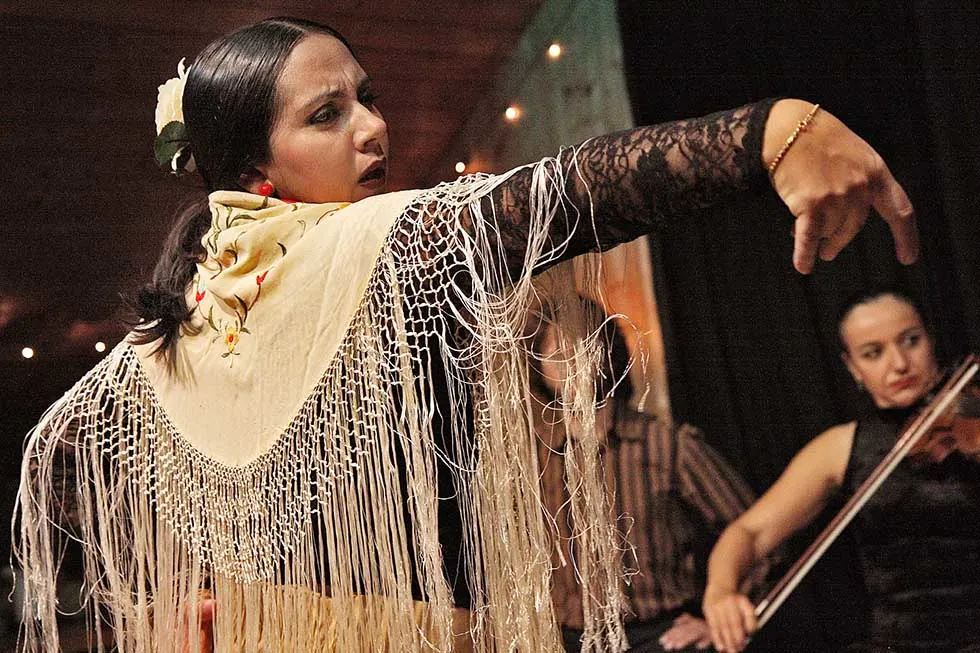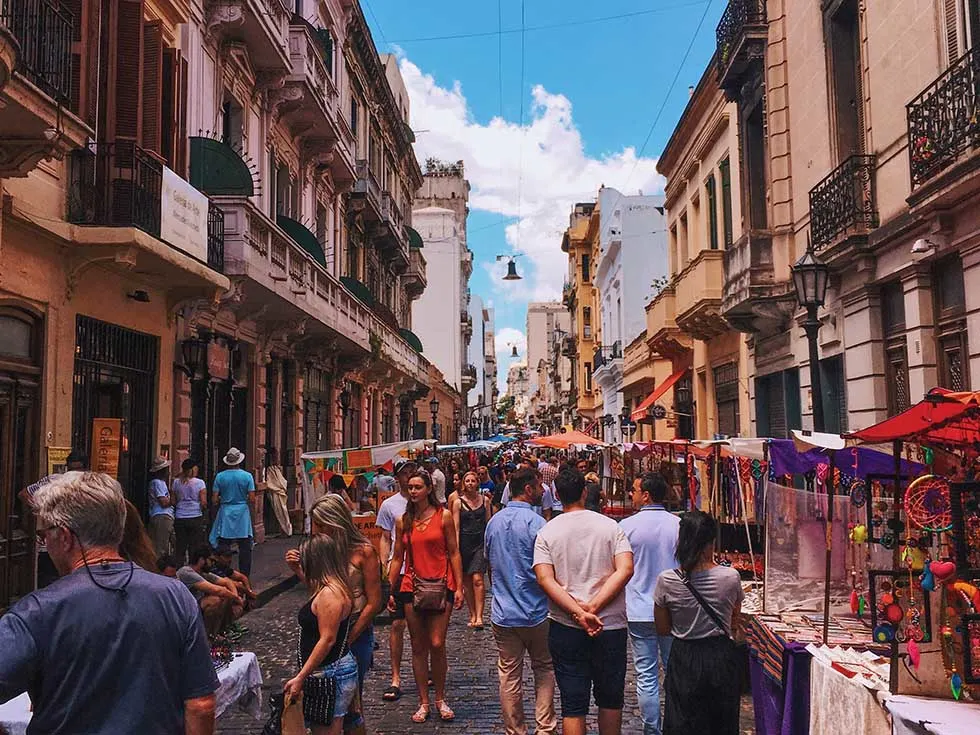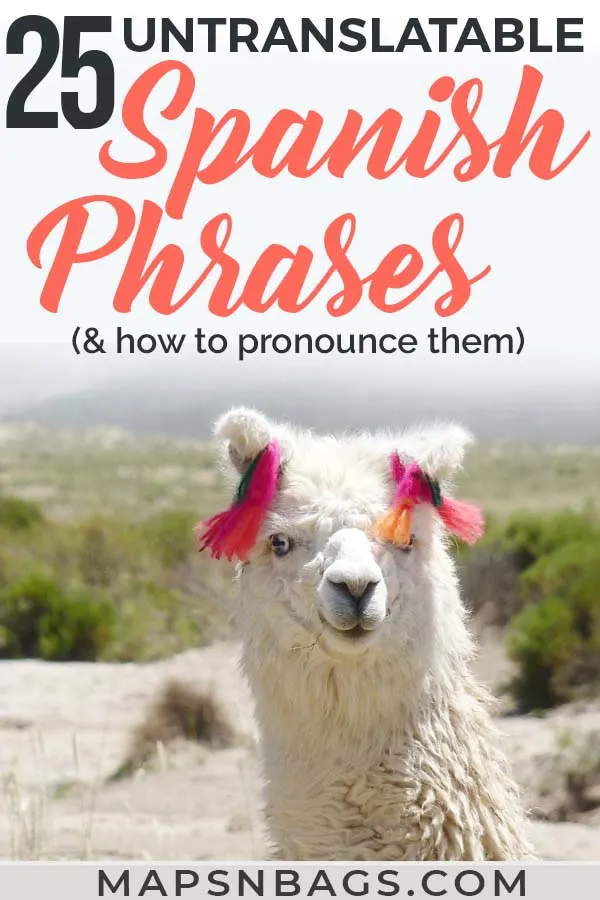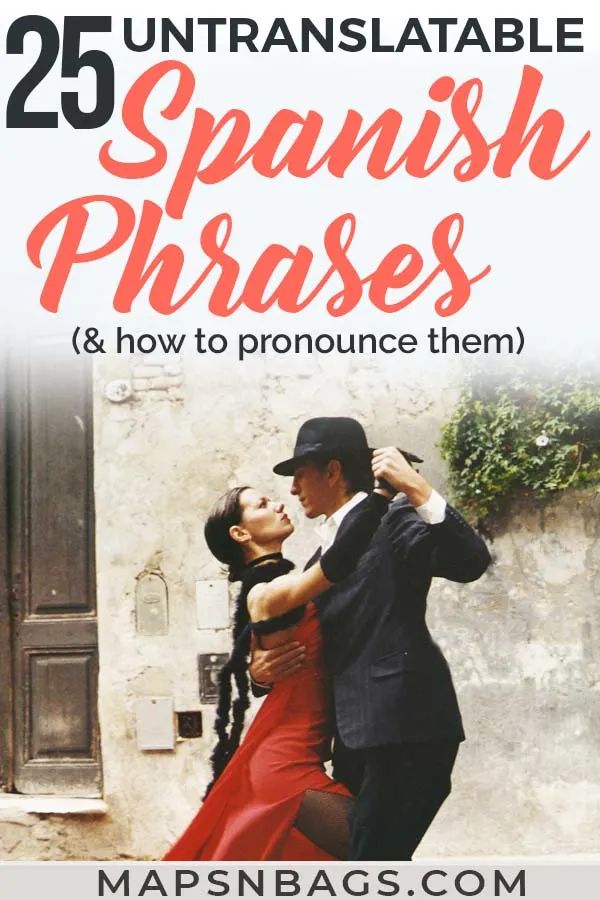“To have a second language is to have a second soul,” said Charlemagne. Was he wrong? I don’t think so.
Speaking different languages shape the way we think, it changes our personality. However, can we also change the way the language evolves?
Well, these are tricky questions that I honestly believe in the affirmative answer.
Languages are ever-changing forms of expression, and the differences between them reveal a lot about the culture they live in.
You will notice most of the Spanish words in this post are food or family-related. That’s because the Hispanic culture is very centered on family and, of course, on delicious food.
These Spanish words show complex emotions and ways to interact with other people. It turns out that most Latin Americans are also warmer people to what regards relationships than the Germanic, for example.
And precisely because of those differences, there are a few Spanish phrases that just don’t have an English translation. The same goes for Spanish curse words. Sorry, folks. But that’s not necessarily bad; it’s just different.
Anyway, Spanish is the world’s 4th most spoken language, and it’s the native language in 21 countries around the globe. So, learn Spanish grammar and help yourself out before traveling to a Hispanic country.
I know it has dozens of tenses (future tense, present tense, etc. are just the tip of the iceberg), but it will open many doors to you for sure. Ready? Read on!

25 Spanish Phrases With No English Translation
1. Friolento (a)
How to say it: free-oh-len-toh
If you guessed this word has anything to do with cold, you got it right. “Frio” means cold in Spanish.
Actually, this is one of the most common Spanish words I’ve heard while visiting Buenos Aires.
I was traveling there for the first time, and while locals were in t-shirts, I had a jacket on. So that’s why I heard many times “friolenta” throughout the day.
This term refers to someone who is very often cold. Do you know that friend that always has a vest or jacket on? Or who is always complaining about the air conditioning? Yes, she/ he is one of them.
Example: El es friolento – He is always very cold.
2. Merendar
How to say it: meh-ren-dar
I think about my school time when I hear this word because the Portuguese translation is very similar. “Merienda” means snack, and “merendar” implies the action of having a snack, which can either be in the morning or the afternoon.
But this is just one of the verbs we use to say we are going to eat something. “Desayunar,” “almorzar,” and “cenar,” mean respectively to have breakfast, lunch, and dinner.
Example: Voy a merendar leche con galletas – I will eat milk and biscuits as a snack.
3. Arreglar
How to say it: Aa-re-glar
Mostly used by women. Ahem. Well, we just need a little more time to get ready, right? “Arreglar” means to get ready, to dress up.
Example: Me arreglo en cinco minutos y nos podemos ir – I’ll take five minutes to get ready, and we can leave.
4. Tutear
How to say it: Too-teh-ar
In Spanish, people use “tú” (you) in informal speech to address someone instead of “usted,” which is formal.
So, they have a verb to differentiate between these treatment ways. This verb means to treat someone informally.
Example: No vayas a tutear tu nuevo jefe – Don’t treat your new boss informally.
5. Pavonear
How to say it: Pah-voh-neh-ar
This verb comes from the noun “pavo,” which means turkey in Spanish. It’s intended to give the idea the person is acting like the animal, like the turkey.
Stuffed chest, looking people down, acting like the king of the area. So, the approximate translation to “pavonear” could be to brag, to show something off.
Example: Juan sólo compró ese coche desportivo para pavonearse – Juan only bought that sports car to show off.

6. Mimoso (a)
How to say it: Mee-moh-soh
Have you ever had a boy- or girlfriend who just couldn’t be around you without hugging you, or touching your hand, wanting to cuddle, etc.?
Or had a cat that couldn’t see without purring? You could call this person/ pet “mimoso.” Comparable translations would be cuddly, affectionate or touchy-feely.
Example: Éste gatito es muy mimoso – This kitty is very cuddly.
7. Buen provecho
How to say it: boo-ehn proh-veh-tchoh
There is no English translation for “buen provecho.” That is so true that native English speakers broadly adopted the French version of it: Bon appétit!
In English, we say “enjoy your meal,” which means almost the same way.
Example: Buen provecho – enjoy your meal
8. Anteayer
How to say it: ahn-teh-ajer
“Ante” means before, and “ayer” means yesterday, consequently “anteayer” means the day before yesterday.
This word has a few variations, which also depend on the country you are at. So when in doubt use “Anteayer” because this is the most common word to say it.
Example: Fui al supermercado anteayer – I went to the supermarket the day before yesterday.
9. Empalagar
How to say it: Em-pah-lah-gar
Perhaps, this is the word I use the most. Foodie here, or better saying, sweet tooth here. Think of that delicious chocolate cake with a sweet topping and filling. Sugar, sugar, and more sugar.
That’s “empalagoso,” for sure. “Empalagoso” literally means sickly-sweet in “Español.” Good to remember if you’re a sweet tooth like me.
Example: Este bollo de chocolate es empalagoso – This chocolate cake is sickly-sweet.
10. Amigovio (a)
How to say it: ah-mee-goh-bioh
This word is the result of two other words put together. Amigo + novio, which means friend + fiancé.
It refers to a person you only have a sexual relationship with, no romantic bond. The translation in English would be ‘friends with benefits.’
Example: Peter es mi amigovio – Peter and I are friends with benefits.

11. Madrugar
How to say it: Mah-druh-gar
Early birds, this one is for you. “Madrugar” means to get up early.
So, whenever you have to wake up with the sun, maybe to take beautiful photos of a famous city, say the example below.
Example: Mañana tengo que madrugar para fotografiar el museo – Tomorrow I have to get up early to photograph the museum.
12. Vergüenza ajena
How to say it: Ver-guEn-zah ah-jeh-nah
Oh, well. You don’t know this word (yet), but you have probably felt it before.
Think of when your mom started dancing like Freddy Mercury at your birthday party, where you also had invited friends, and they couldn’t avoid but to look at her with a confused face.
The wish of being an ostrich so you could bury your head in the sand, it’s called “vergüenza ajena” in Spanish. Which means you’re embarrassed on someone else’s behalf.
Example: Cuando mi madre se puseste a cantar senti vergüenza ajena – When my mother started singing I felt really embarassed on her behalf.
13. Consuegro (a)
How to say it: Con-suh-eh-groh
In the Hispanic culture, the family bond is vital, that’s why there are two words in Spanish with no English translation to describe family members. The first is “Consuegro (a).”
Let’s assume you have a married son. Your daughter-in-law’s father is your “consuegro,” and her mother is your “consuegra.” It’s a much simpler word to say for sure if you compare it with the English translation.
“Con” in Spanish means with, and “suegro” (a) means father-in-law (or mother) in Spanish.
Example: Mi consuegra es muy guapa – My daughter-in-law’s mother is very pretty.
14. Concuñado (a)
How to say it: Con-koo-nyah-doh
This is the second Spanish word to describe a family member that has no English translation. Image your brother is married. Your “concuñada” is, in this case, your sister-in-law’s sister.
“Cuñado” means brother-in-law in Spanish.
Example: Mi concuñada esta embarazada – My sister-in-law’s sister is pregnant.
15. Compadre/ comadre
How to say it: Com-pah-dreh / Com-mah-dreh
Latin Americans love their social circle. Why wouldn’t they? So let’s continue with another example.
Assume you have a child and you named your best friend the godmother/ godfather of your child. That person is your “comadre”/ “compadre.”
Example: Mi comadre y yo vamos a la iglesia – My child’s godmother and I are going to the church.

16. Golpista
How to say it: Gol-pees-tah
A military coup is a coup organized and carried out by military members.
And there is a particular name for its participants in Spanish with no translation in English: “golpistas.”
Example: Mi hermano es un golpista – My brother is involved in a military coup.
17. Puente
How to say it: Puh-en-teh
“Puente” means bridge in Spanish! Yes, you (probably) got it right. However, this word also has another not-so-obvious meaning. “Puente” also means extending a holiday that has a working day between it and a weekend.
So, if there´s a holiday on Thursday or Tuesday, and you respectively take Friday or Monday off. That’s called “puente.”
Example: El martes es festivo, así que vamos a tomarnos el lunes también para hacer puente – Tuesday is a holiday, so we are going to take off Monday as well to make it a long weekend.
18. Estrenar
How to say it: es-treh-nar
We say “estrenar” in Spanish when we use something for the very first time. Like shoes or clothes.
Example: Hoy estreno éstos zapatos. – Today I’m wearing these shoes for the first time.
19. Lampiño (a)
How to say it: lam-pee-nyoh
A person or a limb without body hair is “lampiño.” You know that friend whose beard never grows, and he barely has hair on his arms?
He is a pretty good example of it. Why would people ever create this adjective though? Excellent question.
Example: Mi novio es lampiño – My boyfriend has no beard.
20. Tuerto (a)
How to say it: Too-er-toh
Someone who has only a working eye. Um, yes, that’s right. This odd word can also be used for animals. “Oh, my. What is she teaching me?” you might be asking.
Oh well, this can be useful to describe people/ animals on-the-go, no? Whoops.
Example: Ella tienes un perro tuerto – She has a one-eyed dog.

21. Pardo (a)
How to say it: Par-doh
This is the name of a particular color in Spanish. Do you know that color somewhere between brown and gray? That’s “pardo.”
So, now when someone asks this color’s name, answer it in Spanish. It’s easier.
Example: Mi coche es pardo – My car has a brownish-grey color.
22. Quincena
How to say it: Kin-ceh-nah
The Hispanic have a word to describe (the period of) 15 days, it’s called “quincena.”
Instead of 14 days, like the British ‘fortnight,’ they broadly use 15 days period to refer to a moment in the future (or in the past). That’s it.
Example: Estaremos en Canadá durante la segunda quincena de junio – We’ll be in Canada during the second half of June.
23. Sobremesa
How to say it: Soh-breh-meh-sah
Not so common in the United States, but in Hispanic countries eating is almost an event.
You sit, eat, drink, and even after finishing your meal you stay there to talk, talk, and talk. No need to rush. That conversation after a meal is called “sobremesa” in Spanish.
“Sobre” means on in Spanish, and “mesa” means table. Logical to the say the least.
Example: Recuerdo las largas sobremesas de los sábados en casa de mis padres – I remember the Saturday after-dinner conversations that would go on forever at my grandparent’s house.
24. Te quiero
How to say it: Teh keeh-eh-roh
You can say “te quiero” to a close friend, family, etc. It means “I like you a lot” or even “I love you,” but it’s not in the romantic sense of the sentence.
You’re not saying that the person is your soulmate. Spoiler: “te amo” is the correct Spanish phrase to express a deep, romantic love for someone (“I’m in love with you”).
Example: Te quiero, Peter – I like you a lot, Peter.
25. Estadounidense
How to say it: Es-tah-dou-nee-den-seh
In Latin America, people learn that Americans are people who are born on the American continent.
For that reason, people who are born in the United States are called “Estadounidenses.” So don’t weird out if someone asks the country you were born after you’ve said you’re an American.
That’s why this word, in native Spanish-speakers’ eyes, has no translation in English. The more you know…
Example: Mi novio es Estadounidense – My boyfriend is American (don’t say it there though).
Conclusion
When you learn a new language and its peculiarities you also learn about a new culture without intensely studying it. Just pay attention to their words, and you will understand a lot what their values are about.
What other words would you add to this list? What about the words in English with no translation in Spanish? Let us know in the comments if you have something to share!
Did you like this post? Then pin it to your Pinterest board!
Our best travel tips & resources:
Here're our all-time favorite travel tips & resources so that you can save money and plan your travel logistics hassle-free! For more travel resources, check out our travel tips.- Saving money: Fly on offseason, winter (not Xmas or NYE), Tuesday, or Wednesday! According to experts, these are the cheapest days to fly.
- Travel insurance: Before you leave for your trip, make sure you have a valid travel insurance policy because accidents happen on the road. We have been paying for Safety Wing travel insurance for a little over a year now, and we happily recommend them to our family and friends.
- Accommodation: We usually stay in mid-range comfy hotels or private rooms in hostels. These are the sites we use to book accommodation: Booking.com for hotels (excellent flexible cancellation policy) and Hostelworld for hostels (low deposit and easy cancellation).
- Tours:We absolutely love booking guided tours with locals to get a history lesson while sight-seeing, especially food tours and walking tours! We book all of our tours using Viator and GetYourGuide.
- Transportation: We use Google Maps to figure out how to get around a place using public transport. When we book a rental car, we always use Discover Cars to find the best deal.



Ma
Monday 7th of June 2021
It is “cenar” not “ceñar”. Ceñar means to wink.